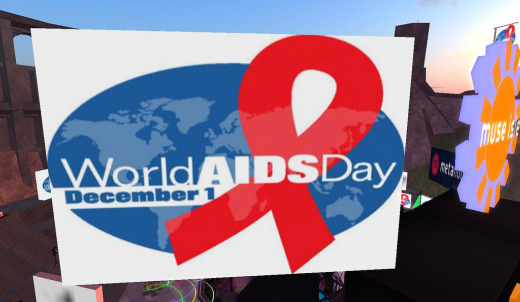
In South Africa, where one of every nine residents is living with HIV and workers fear losing their jobs if they are perceived as HIV positive, there is a program to combat the disease that they are not afraid to join.
In the last 12 months more than 6,000 have come forward to get tested, get counseling and get medical care.
The program was able to break down the wall of fear because it is led by a union, an organization the workers trust.
The effort began a year ago on World AIDS Day 2008, as the result of collaboration between the AFL-CIO Solidarity Center and the National Metalworkers Union of South Africa. It operates under the slogan, “Be Faithful, Be Tested, Be Unionized.”
In East Africa, the Solidarity Center has launched Safe T Stop, a program that brings HIV/AIDS prevention, care and treatment to long-haul truckers and the towns they live in along the highways of East African nations.
Labor unions around the world, however, are concerned that the global economic crisis could potentially squash the successes of programs like these. In a special World AIDS Day statement, the International Trade Union Confederation said it is “deeply concerned about the financial crisis on development and on efforts to combat HIV-AIDS.”
“There is clear evidence that the crisis has deepened the already existing inequalities in the world. With 60 million people expecting to lose their jobs and 200 million more falling into absolute poverty, trade unions call on governments to keep their promises to deliver resources to achieve universal access to treatment, and to halt and begin to reverse the spread of the pandemic.”
The AIDS pandemic, according to the World Health Organization, has infected 33 million people worldwide, including more than 1 million in the United States.
The labor movement says the pandemic is a major issue for labor because it has devastated workers and their families, shattered working class communities and is, in many places, reversing improvements workers have won in their work and living standards.
The impact of the disease on children continues to be enormous. More than 2 million children worldwide suffer with the disease with 1,000 more being infected every day.
At least one major union in the U.S. is focusing on the impact of HIV/AIDs on children. The Communications Workers of America has joined with the Elizabeth Glaser Pediatric AIDS Foundation and the producers of a children’s DVD, “Sockville -A New Pair of Socks” to help fight the scourge among children.
The DVD sells for $9.99 and can be purchased through the CWA’s web site. A third of the proceeds goes to the Glaser Foundation’s fight against pediatric AIDS.
Another U.S. union, the American Federation of Teachers, meanwhile, just announced it is stepping up its efforts both in sub-Saharan Africa and here at home.
The AFT, together with teachers unions in Africa, has launched the Teachers Caring for Teachers program. As part of that effort the union’s Educational Fund is working with six unions in South Africa, where it has reached 750,000 teachers.
The AFT is responsible also for successful efforts to raise consciousness about the pandemic in American schools, where it has managed to win numerous additions to the teaching programs.
Two months ago students at Artesia High School in Lakewood, Calif., and a high school in Cape Town, South Africa, began communicating with one another about their experiences with HIV/AIDS.
AFT Vice President Marilyn Stewart has addressed teachers, students and administrators on the AIDS crisis.
Stewart says, “AIDS knows no boundaries – geographical, economic, gender or age. Our teachers in the Bronx and Miami are as challenged by the effects of the disease as their colleagues in classrooms in Kenya and Haiti and Indonesia.”
The AFT has pushed for education about the disease both in its union halls and in classrooms ever since HIV/AIDS first was documented in the early ‘80s, and even helped formulate the bloodborne pathogen safety regimen eventually adopted by the Occupational Safety and Health Administration.
Photo: http://www.flickr.com/photos/danielvoyager/ / CC BY 2.0












Comments